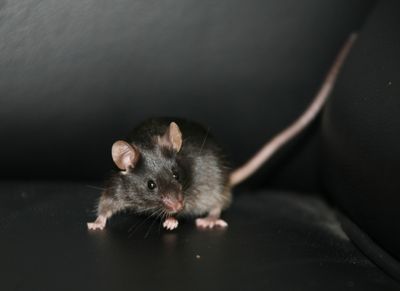Stem-cell alternative
Chinese scientists breed mice from skin cells

WASHINGTON – Chinese scientists have bred mice from cells that may offer an alternative to embryonic stem cells, producing the most definitive evidence yet that the technique could help sidestep many of the explosive ethical issues engulfing the controversial field but raising alarm that the advance could lead to human cloning and designer babies.
In papers published online Thursday by two scientific journals, separate teams of researchers from Beijing and Shanghai reported that they had for the first time created virtual genetic duplicates of mice using skin cells from adult animals that had been coaxed in the laboratory into the equivalent of embryonic stem cells.
The findings were welcomed by both supporters and opponents of human embryonic stem cell research as a long-sought vital step in proving that the cells could be as useful as embryonic cells for studying and curing many illnesses.
The results come just as the Obama administration has eased federal restrictions on government funding for embryonic stem cell research and could influence how to prioritize millions of dollars in new spending in the field.
But because of concerns the techniques might make cloning and genetic engineering of embryos easier, the work could reignite calls for a ban on attempts to clone people and for restrictions on genetic manipulation of embryos.
“The implications of this are both enormously important and troublesome,” said Robert Lanza, a stem cell researcher at Advanced Cell Technology in Worcester, Mass. “It revives many of the issues raised by reproductive cloning.”
Many scientists believe human embryonic stem cell research could revolutionize medicine by enabling doctors to use genetically matched tissues to treat many diseases, including diabetes, Parkinson’s disease and paralysis. But the field has been mired in controversy because embryos are destroyed to obtain the cells.
In 2006, scientists discovered they could induce adult cells to regress to a stage that appeared identical to embryonic stem cells, called induced pluripotent stem (iPS) cells, raising hopes for a less controversial alternative. Although scientists have been become increasingly adept at creating and manipulating such cells, questions have lingered about whether they are truly equivalent. The new experiments were designed to put the cells to what has long been considered the most rigorous test.
In the studies, published in the journals Nature and Cell Stem Cell, the researchers used viruses to flip genetic switches in the DNA of skin cells from adult mice to turn them into iPS cells in the laboratory. The researchers then injected some of the iPS cells into very early embryos that are capable of forming a placenta but not of fully developing on their own. The resulting embryos were then transferred into the wombs of female surrogate mice.
One team of scientists led by Qi Zhou of the Chinese Academy of Sciences created 37 iPS cell lines, three of which produced 27 live offspring, the first of which they named Tiny. One of the offspring, a 7-week-old male, went on to impregnate a female and produce young of its own. Altogether, the researchers bred at least 100 first-generation mice and hundreds of second-generation mice that were nearly identical genetically to the mice from which the iPS cells had been derived.
“This gives us hope for future therapeutic interventions using patients’ own reprogrammed cells in the future,” Fanyi Zeng of the Jiao Tong University in Shanghai, who worked with Zhou, said during a telephone briefing for reporters.
The second group of researchers, led by Shaorong Gao of the National Institute of Biological Sciences in Beijing, created five iPS cell lines, one of which was able to produce embryos that survived until birth. Although four animals were born, only one lived to adulthood. Nevertheless, the work is “proof that iPS cells are functionally equivalent to embryonic stem cells,” Gao said in a telephone interview.
Other researchers agreed, praising the work as a long-awaited confirmation of the cells’ equivalence.
“This clearly says for the first time that iPS cells pass the most stringent test,” said Konrad Hochedlinger, a stem cell researcher at Harvard University.
Opponents of human embryonic stem cell research said the findings provide the latest in a growing body of evidence for why such research is no longer necessary.
“Nobody has been able to find anything that embryonic stem cells can do that these cells can’t do,” said Richard M. Doerflinger of the U.S. Conference of Catholic Bishops. “This was the last remaining barrier.”
The Chinese researchers and others, however, said continued research on embryonic stem cells remains crucial to validate iPS cells and because it remains unclear which cells will turn out to be most useful for different purposes.